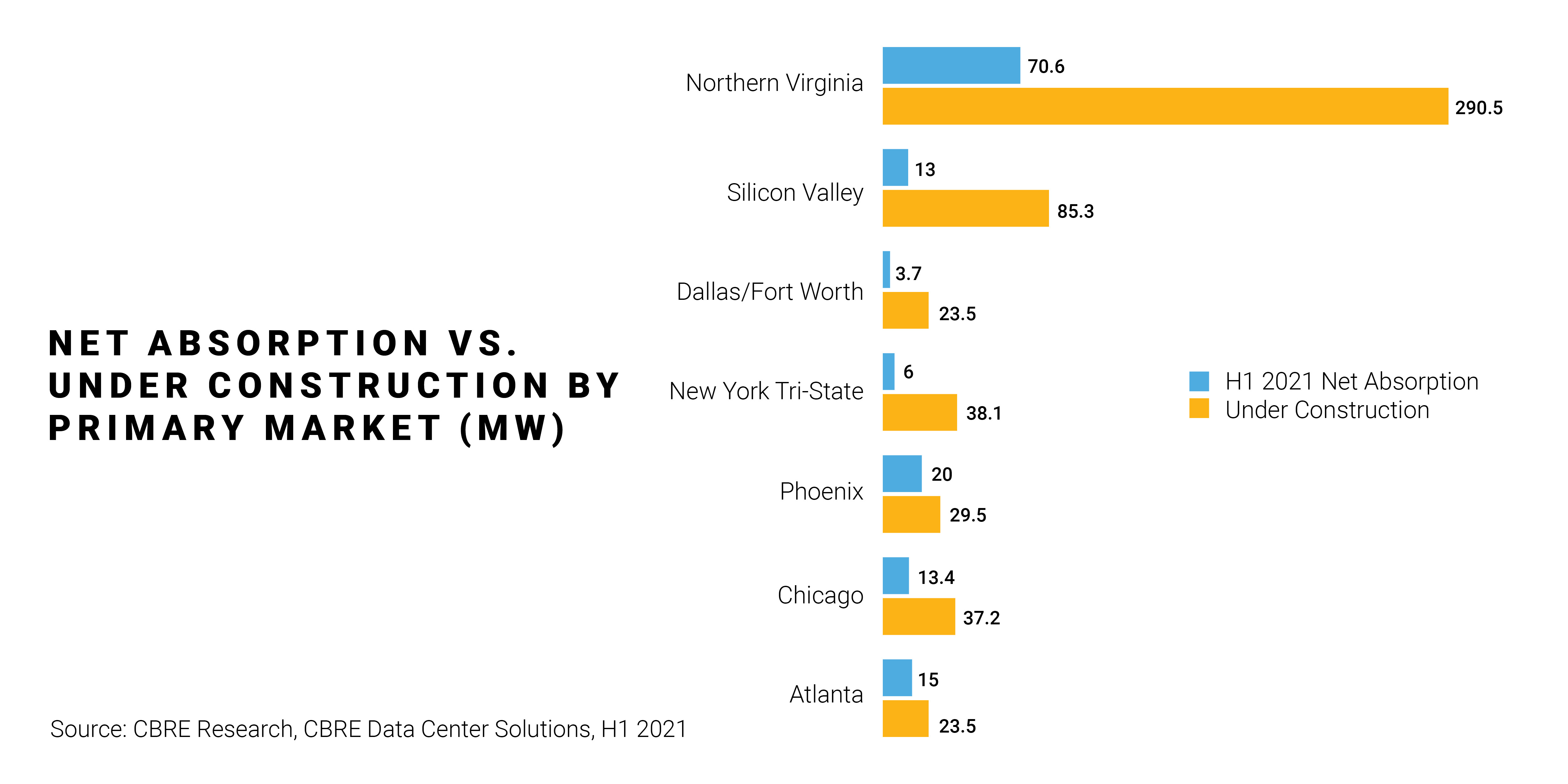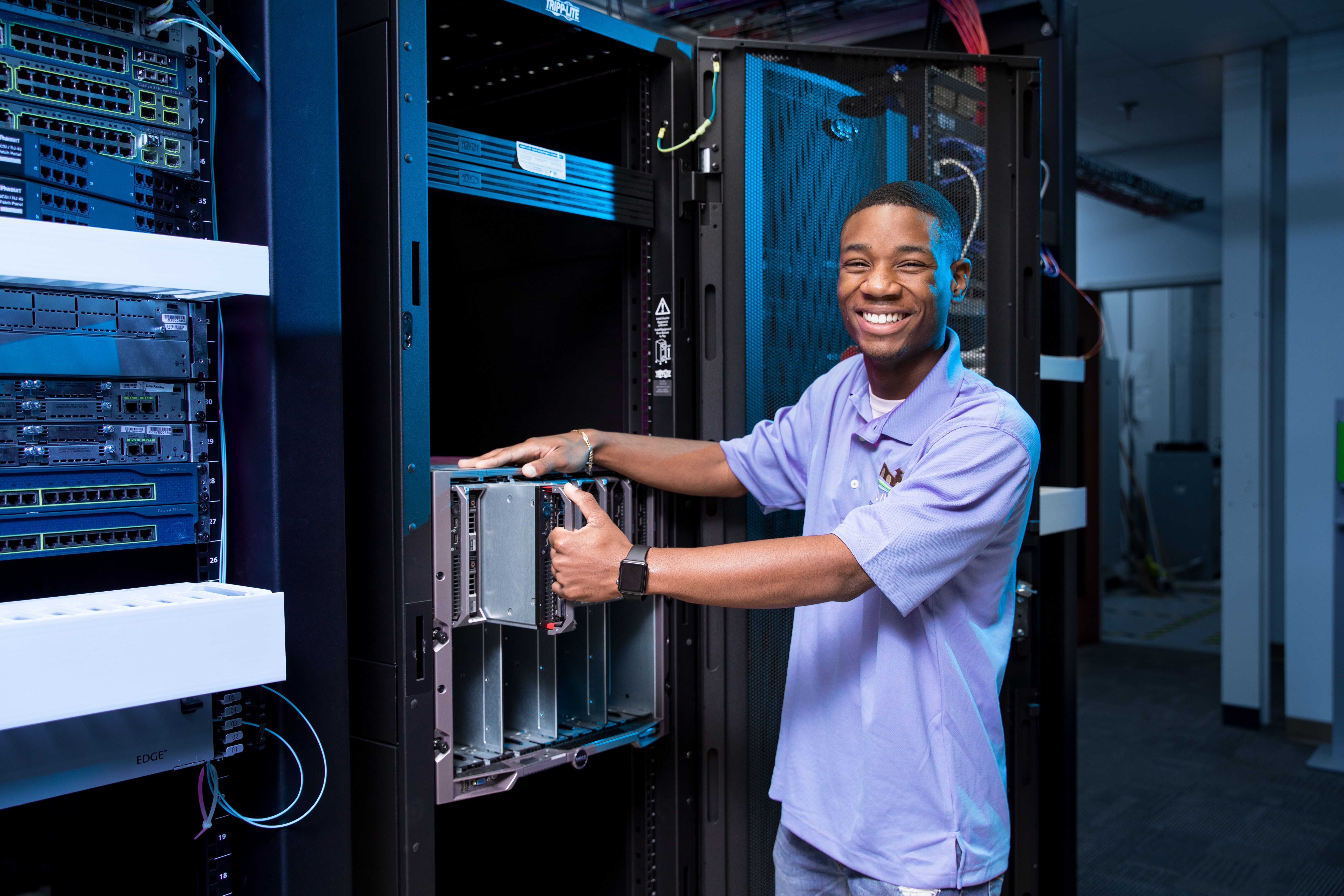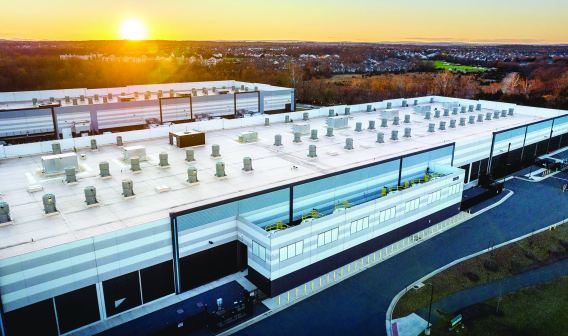Data Centers Under Pressure to Meet Post-Pandemic Technology Needs
After a year of focusing on operations during the COVID-19 pandemic, data center investments are on the rise, with an eye on expanding capacity to meet pandemic-influenced changes in consumer behavior. Gartner research indicates that global spending on data center systems is expected to reach $237 billion in 2021, representing an increase of nearly 8% year-over-year. Financial, technology, cloud, social media, e-commerce, and healthcare companies have driven most of this demand, which helped drive an increase from 611 MW to 681 MW of capacity in new U.S. data center construction in the first half of 2021.
“The pandemic accelerated the pace at which businesses, governments, and individuals are pursuing all-digital solutions, transitioning to online platforms, and migrating to secure cloud services,” said Josh Levi, president of the Leesburg-based Data Center Coalition.
Recent advancements in the data center industry have come from refinement of best practices and enhanced efficiencies to increase capacity and reduce costs. According to Tim Hughes, vice president of strategy at digital infrastructure provider Stack Infrastructure, new data center construction and improvements to existing data centers are focused on:
- Increased efficiency of mechanical and cooling systems
- Increased efficiency of servers
- Meeting aggressive goals, including a continued push for greater access to green energy
- Green construction methods
- Creating a safer workplace
One of the biggest operational concerns for data centers is maintaining temperature as capacity, new equipment, and rack densities are increased, all while trying to stay in the same footprint. Providers are focused on developing cooling technologies that go beyond standard air conditioning, including air-cooled chillers, evaporative cooling, and in-row cooling.
That imperative has led to some novel solutions. Microsoft has tested the use of ocean water to cool data center servers placed on the bottom of the ocean. In 2020, after two years of submerged operation, the company announced that the servers were more reliable than those on land and that it would move ahead with advanced testing.
The data center industry is a leader in commitment to efficient energy use, procurement of renewable energy, and water conservation. Evolving best practices — and changes to the monitoring of energy consumption using Internet of Things technologies, artificial intelligence (AI), and predictive maintenance — can optimize the efficient use of natural resources. Google’s use of AI, for example, has reduced its data center cooling costs by up to 40%.
Data center efficiencies can also be improved through automation — a single software administrator can manage thousands of servers. Increased training, process improvements, and the introduction of robotics have allowed critical facility operations staff to manage ever larger data center deployments.
Changing Construction Trends
Increased distance learning, remote work and collaboration, telehealth, e-commerce, gaming, and streaming services are among the factors that have driven an increase in demand for data center infrastructure and storage capacity during the pandemic. In response, new data centers are being built larger, taller, and denser to provide increased capacity.
Another key driver, which is projected to grow exponentially over the next several years, is the deployment of 5G, which will drive the construction of smaller “edge-computing” data center facilities that are located closer to end users to enable faster flow of data.
“As 5G deployment increases, the demand for bandwidth and decreased latency of 5G applications will surge, creating massive capacity needs,” Hughes said. “To meet these demands, there will be construction growth of large core data centers, as well as select edge data centers.”
Data centers that already operate on 4G infrastructure can still handle 5G data, but must build new transmission infrastructure to adapt their systems for 5G frequencies. 5G will also require a massive amount of new fiber deployment.
Moving Beyond the Pandemic
Virginia handles about 70% of the world’s daily internet traffic through its network of data centers — and that doesn’t appear to be changing. According to CBRE’s 2021 North American Data Trends Report, more than half of new data center construction in the U.S. is in Northern Virginia, driven mostly by an ever-growing demand for cloud services. Hughes calls Virginia “the largest cloud market in the world,” and CBRE research indicates an uptick in speculative land acquisition and construction to help fulfill customer needs.
New and existing data centers, both inside and outside the Commonwealth, will continue to innovate and adjust operations and procedures to mitigate the risk of COVID-19 transmission, while best practices that changed due to the pandemic can drive efficiency in new construction.
“Constructing data centers during the pandemic created a corporate plyometric effect partly due to two factors — heightened safety requirements for COVID-19 and increased customer demand,” Hughes said. “We honed our skills and focused on best practices, and learned how to make them safer and build them faster. To maximize speed of delivery, we pushed for prefabrication, which controls quality and reduces construction time and costs. Most new buildings were constructed with expansion in mind, leveraging flexibility and modularity.”
Post-pandemic planning must include deeper conversations around cloud utilization and balance, infrastructure efficiency, and how to support a far more distributed workforce.
Bill Kleyman, executive vice president of digital solutions at Switch, a data center company, emphasizes that this is a perfect opportunity for leaders in the digital infrastructure space to embrace new solutions and new approaches to the market.
“Some are looking into robotics and automation, while others are investing even more into security or looking into more effective ways to manage critical infrastructure pieces remotely,” he said. “The big point here is that data centers are a vital part of our connected society. Post-pandemic planning must include deeper conversations around cloud utilization and balance, infrastructure efficiency, and how to support a far more distributed workforce."







